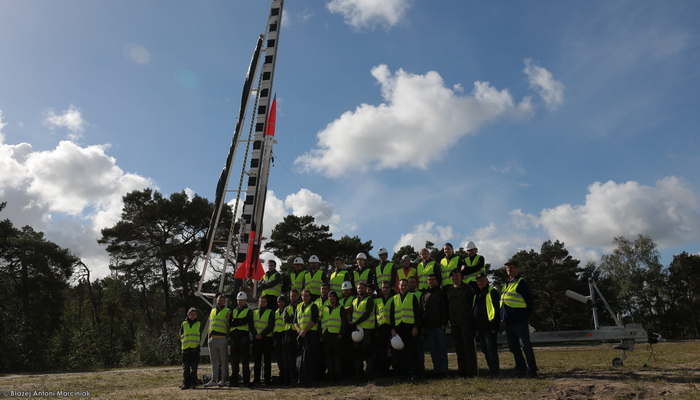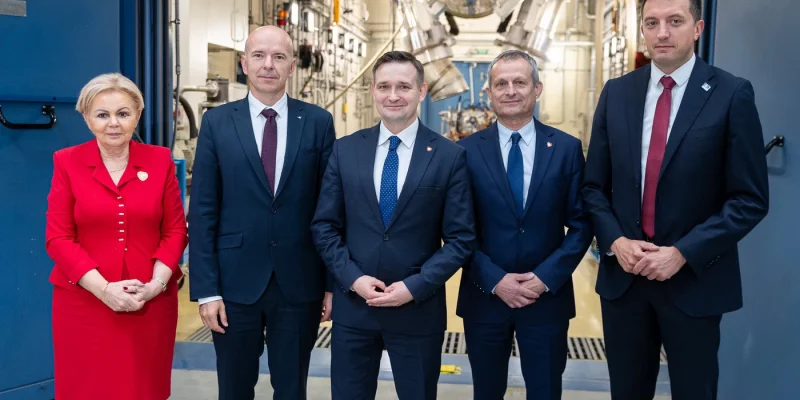In October 2017, Warsaw Institute of Aviation’s ILR-33 Amber rocket was in-flight validated for the first time, thus becoming the world’s first rocket utilizing in flight H2O2 of concentration exceeding 98%. After confirmation of nominal operation of critical subsystems, Institute of Aviation proceeded to the next stage of the rocket’s development.
Recent activities were aimed at increasing the functionality of the rocket, repeatability verification and demonstration of new technologies during a flight to higher altitudes. The Institute, together with the Polish Space Agency (POLSA), made efforts to increase the admissible flight altitude over Polish military test ranges. Until now, the maximum ceiling was limited to 15 kilometers.
Thanks to the support of the Armed Forces General Command, Military Air Traffic Service Office of the Polish Armed Forces, Polish Air Navigation Services Agency and the Air Force Training Centre in Ustka, it was possible to lift the ceiling limitation over the military range in Ustka (EA 220 and AMBER01 zones). An UNLIMITED value has been assigned. Thus, rocket flights for yet unavailable heights are now possible. Consecutive actions, that are continued by Institute of Aviation and the Polish Space Agency, are aimed at expanding the horizontal boundaries of the airspace and landing zone, which are critical in terms of flight safety. More on this subject can be read on the website of POLSA [https://polsa.gov.pl/wydarzenia/13-ostatnie/720-pak-dazy-do-otwarcia-polskiej-przestrzeni-powietrznej-dla-lotow-rakiet-suborbitalnych].
In September 2018, ILR-33 Amber rocket was to have its second in-flight test at Ustka Training Centre. The team from the Institute prepared two version of the rocket – the standard one and a new one, with an attitude control system. Due to bad weather conditions, which were manifested by the presence of strong jet streams at the ceiling below 12 km, which speeds exceeded 200 km/h, the launch attempt has been cancelled. Flight in such conditions was unacceptable in terms of security reasons. Despite the readiness of the rockets and the four-day-long launch window, it has been decided to cancel the test campaign. The team, however, managed to test the infrastructure developed for the last year, that supports preparations for launch. It was also adapted to conditions of the military range in Ustka.
Moreover, the procedures regarding systems integration, logistics and the decision algorithm that allows for launch were also verified. Progress in this domain would not be possible without the support of Armed Forces General Command and representatives of Air Force Training Centre in Ustka. The logistic, organizational and formal support of mentioned units was crucial in terms of preparations for carrying out such activities.
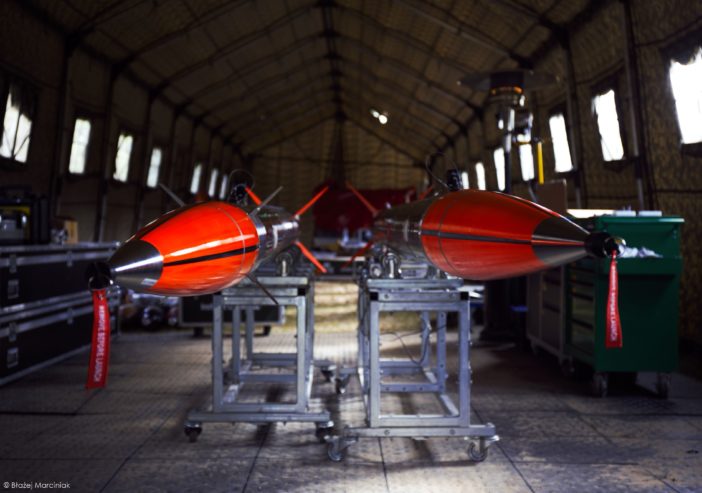
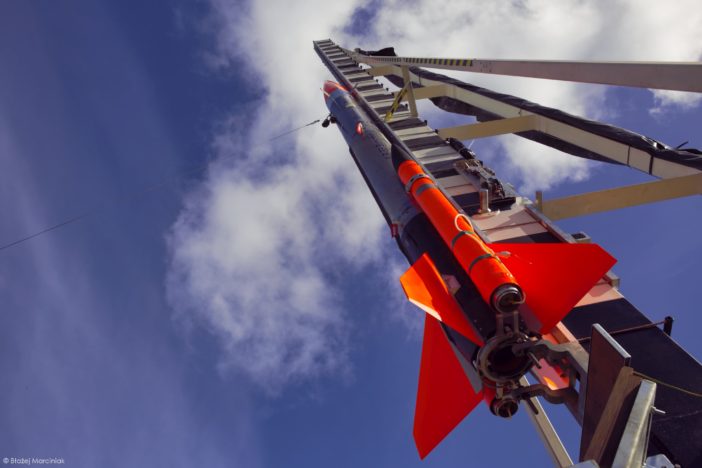
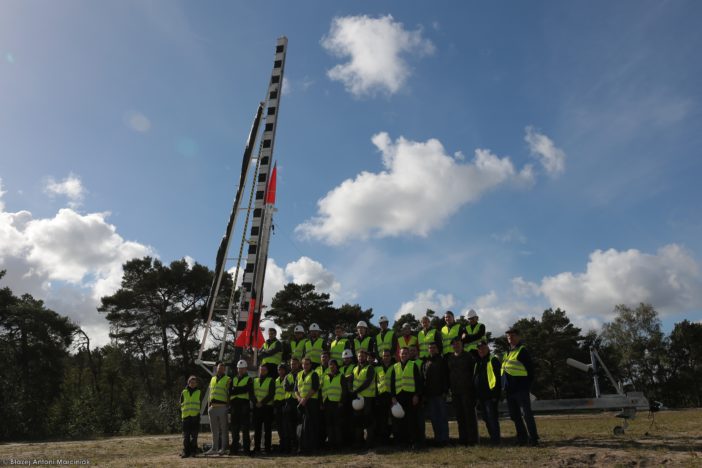
Furthermore, the preparations for the test campaign constituted as one of the most advanced in the history of civil rockets programs in Poland. The launch infrastructure included i.a. over 150 m2 of dedicated indoor integration space, the improved mobile launch pad, mobile propellant facility, mission control room, rocket tracking systems and an electronic, fully-autonomous launch control system.
In addition to the on-ground facilities, the actions were supported by naval units with a customized ship for rocket recovery, an aircraft for observation purposes and meteorological balloons. Balloon probing was also carried out by the team of Institute of Aviation and allowed for obtaining real-time data, concerning the wind profile in function of altitude. This enabled to implement wind data into software that simulates rocket performance. The released balloon reached the ceiling of 36.7 km providing the necessary data.
Although the launch was not possible, the advances in rocket propulsion in recent months have been recognized by the European Space Agency. Institute of Aviation is the national leader in chemical rocket and satellite propulsion, as evidenced by the participation in 9 out of 11 ESA projects in this area that have been carried out in Poland.
During 1-5 October 2018, the ILR-33 Amber rocket was exhibited at the 69th International Astronautical Congress in Bremen at the stand of the Polish space sector, that was organized by the Polish Space Agency, Industrial Development Agency JSC and the Polish Space Industry Association. The rocket was suspended over the Polish exhibition stand and was of great interest of the visitors.
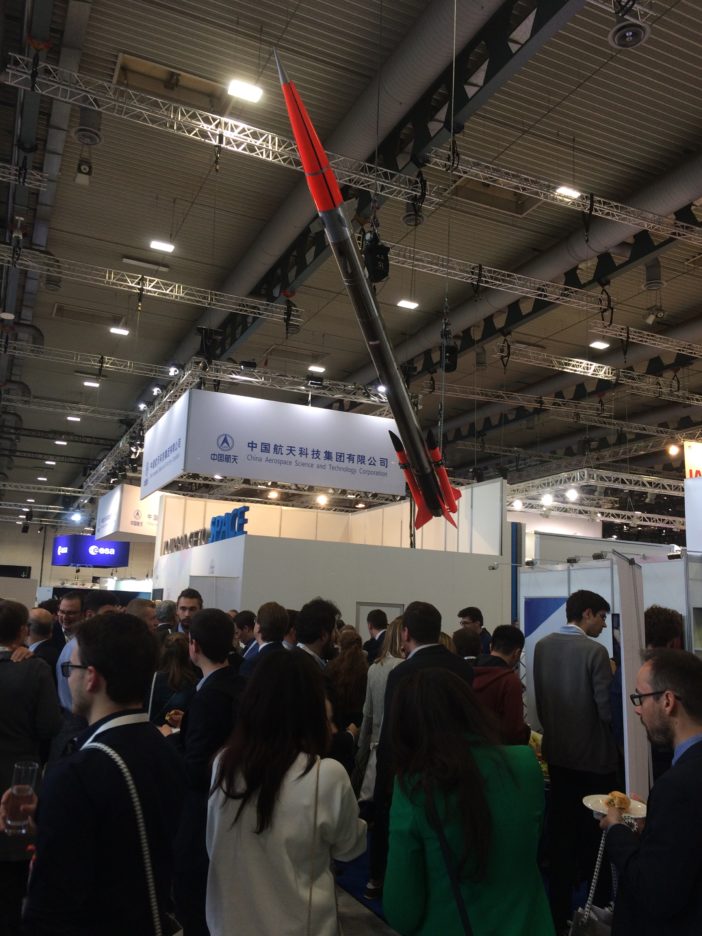
The ILR-33 Amber rocket can also be seen on the 12th of October, during the 9th Night at the Institute of Aviation in Warsaw. The construction will be presented in the similar-to-launch configuration – on the launch pad. The representatives of the Institute encourage to participate in the event. More information is available on the dedicated website: nocwinstytucielotnictwa.pl/en.
Source: Institute of Aviation


